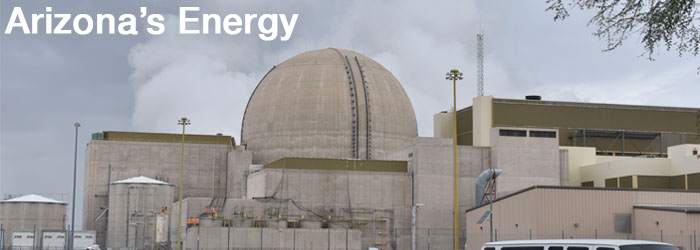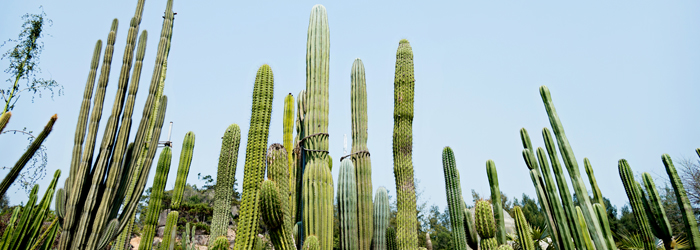Top 3 Home Improvement & Top 3 Landscape Articles of 2019
 23 December 2019
23 December 2019 

Most Popular 2019
Wow! We sure have covered a lot of topics in our 30+ years!
The Rosie on the House website gets over 70,000-page views every week. Readers poke around looking for recommendations on Rosie-Certified Partners to hire for the projects, answers to frequently asked questions about Arizona homeownership, videos on home repair and maintenance, or podcasts of past programs. Every Tuesday we post a new blog that will also be discussed on air on the following Saturday.
At the end of each year we look back at the blogs that received the most website clicks. Sometimes they are blogs from previous years, as is the case of three of the five below.
So, in case you missed these or could use a refresher, these are the top three home improvement and top three landscape blogs that received the most website clicks in 2019.
Home Improvment
1 | Tankless Water Heaters
First appeared October 8, 2019.

You rely on your water heater for all the hot water you need to cook, clean, and bathe. When you can't get any hot water or your water heater stops working, it's a major inconvenience. Not many people enjoy a cold shower.
Water heater replacement can be a time-consuming and costly endeavor. Furthermore, knowing when to replace your water heater can be difficult to gauge due to our year-round warm temperatures. The water heater is generally the first appliance that needs to be replaced in your home.
Most people wait until their water heater fails before replacing them. It's estimated that 80 percent of all conventional tank water heaters will rupture resulting in damage.
2 | How To Make Your Home A Less Desirable Target To Burglars
First appeared August 6, 2019.

There are few things that make a homeowner feel more compromised than knowing someone has been tampering with their home - inside or out!
Here are some solid tips that will help make your home a less desirable target:
If you are worried about your home being burglarized, protecting vulnerable points of entry for your home is a great place to start.
- Burglars want to spend less than 60 seconds at your front door.
- Visibility is key. Light the front door and install motion sensors lights. Make sure there is a good line of sight between your house and the street and to your neighbors.
- Err on the side of caution. Install wide-angle peepholes and don't open the door to anyone you don't know!
- Re-key a previously occupied home. You never know how many old keys are out there.
- Secure the door by installing a solid-core or hardcore wood door to make it difficult to kick in. Use effective hardware including double cylinder deadbolts and bump proof locks.
- Add a smart lock. A good smart lock like Lockly will allow you to let someone in even when you are away from home.
- Add a Smart Doorbell like Ring that allows you to monitor the activity of your front door. You can share videos with your neighbors to create a neighborhood watch!
- Add a sturdy, dead-bolting security door
Read the full blog and listen to the podcast
3 | Where Does Arizona Get Its Power?
First appeared May 28, 2019.

It would be a fair assumption to think that Arizona squanders a lot of money and energy running air conditioners half the year. The fact is however, that our state – the 14th most populous in the union – ranks close to the bottom -- 43rd among all states -- in energy consumption per capita.
Our low consumption is partly because we have a small industrial sector and a mild climate, according to the U.S. Energy Information Administration, a division of the Department of Energy. We do drive our cars a lot in Arizona, and half the energy used is consumed in transportation.
When you turn up the thermostat in winter and power up the AC in summer, you rarely think about where the gas or electricity comes from or which of the 10 power utilities in Arizona is your supplier. You just want it to come on, and you expect it to work smoothly.
Landscape
1 | Plants: Out Of Control
A top 5 article 2018, 2017 & 2016. First appeared July 27, 2016.

Be wary of Arizona plants that can take over your yard.
That sounds just like a tree called the Dalbergia sissoo, commonly known as Sissoo or Indian Rosewood. This is a tree that many homeowners plant because it's very lush and fast-growing. Sissoos grow to a moderate height of 35 to 40 feet but their vigorous root systems can threaten underground irrigation lines, sidewalks, block walls and even lawns. The invasive roots can take over a yard after only a few years. Some homeowners complain about the many pods and leaves that drop off the tree, but its roots pose the biggest problem. Then when a decision is made to remove the tree, the real headaches begin.
2 | The Toughest Stuff To Grow In Arizona
A top 5 article 2018, 2017 & 2016. First appeared June 29, 2016.

Six Finicky Plants & Why We Crave Them
Over the years we've found that there are several unique plants that many Arizona residents really yearn to have in their yards despite the fact that the odds of success are stacked against them. Again and again these gardeners call our "Rosie on the House" radio program asking if they can grow them or asking why they died.
Jay Harper of Harper's Nursery in Scottsdale, a regular expert on the gardening hour of our show, gave us his list of the six most popular finicky plants and explained why they generally fail to thrive in the Arizona desert.
Avocado Trees
If you love guacamole, you may yearn to grow avocados. But these plants fail partly because it's too hot in the summer and too cold in the winter."
Azaleas
One of the most important problems for azaleas as well as for other plants on our list is the extreme alkalinity and saltiness of soil in Arizona.
Tropical Fruit Trees like Papayas, Mangoes and Bananas
Even though these trees are tropical and seem to love very warm places as are found in our state, they also love the shade. They can also get too cold in winters here and too hot in summer.
Hostas
Hostas are shade-loving, leafy perennials very popular in the Midwest. They don't require a lot of acid in the soil, but they don't like strong sun.
Peonies
Some gardeners say peonies like a winter chill, but other people say these luxuriant flowering bushes do not need a heavy cold season.
Hydrangeas
Hydrangeas are also fabulous blossoming bushes with immense flowers. They come from Asia and are particularly popular in China, Japan and Korea.
3 | Six Questions Often Asked About Saguaros
First Appeared January 25, 2017.

Nothing says you're in Arizona better than those silhouettes of saguaros set against a red sky at sunset. After all, the National Park Service says, saguaros mostly grow in the Sonoran Desert. That means that almost all the wild ones grow in Arizona and some smaller areas of Mexico and California.
Often on "Rosie on the House," we get questions from homeowners who have saguaros in their yards or want to plant a saguaro. Here are seven things you may want to know about them as well:
1 | Can I dig up my saguaro and get rid of it? Other versions of this question: Can I give my saguaro to my neighbor? Or can I sell my saguaro because I could use the cash?
You probably know that saguaros are native plants that have state protection. According to the Arizona Department of Agriculture, you as a landowner have the right to destroy or remove any plant on your land. But with native saguaros, you must notify the department first. You also have the right to sell or give away any plant on your lot. But if you're transporting the cactus somewhere else, you need a $7 permit and a tag for $8. You don't want to forget the permit, or you may end up being fined. If you're hoping to sell a saguaro to a plant dealer, by the way, it needs to be in almost perfect condition.
###
RELATED CONTENT:
- For More Blogs Visit: www.RosieOnTheHouse.com/blog and read blogs going as far back as 2008!
- For DIY FAQ Articles Visit: www.RosieOnTheHouse.com/faqs
Print this page
recent post
- Duck, Duck, Duct! How Often Should Ductwork Be Cleaned?
- Vinyl vs. Fiberglass Windows: Which Is The Better Choice Of Replacement Window?
- We May Be The Grand Canyon State, But The Rocky Mountains Are Important For Arizona
- Welcome to Arizona! Things A Newbie to Arizona Should Know
- The Pros & Cons of Buying A Flipped House
- Getting In On The Ground Floor
- Why It’s More Critical Than Ever To Get Your AC Serviced Before Summer
- The Reality of Remodeling
- What To Look For When Comparing Your Roofing Quotes
- What To Expect When Buying New Windows & Doors
